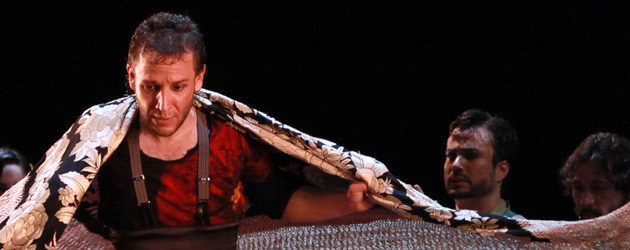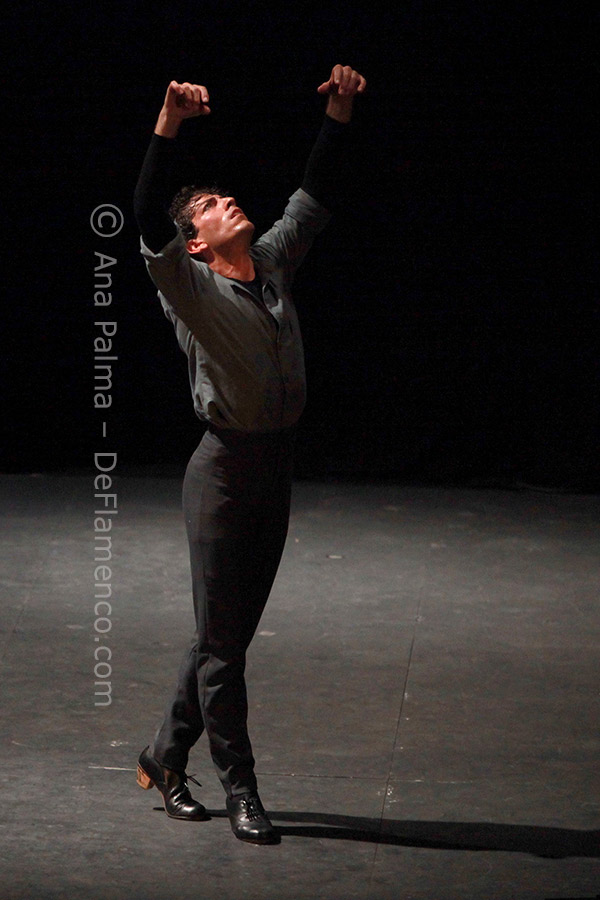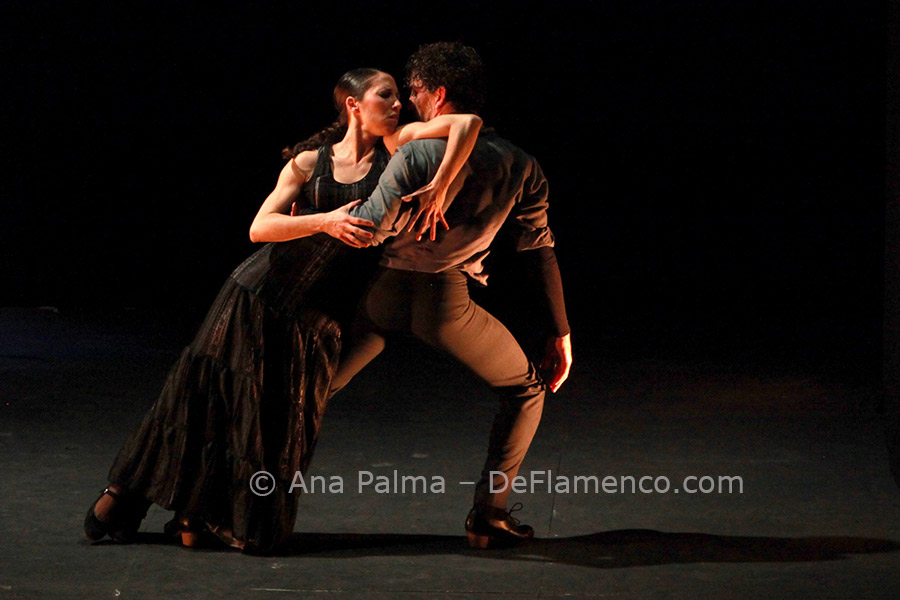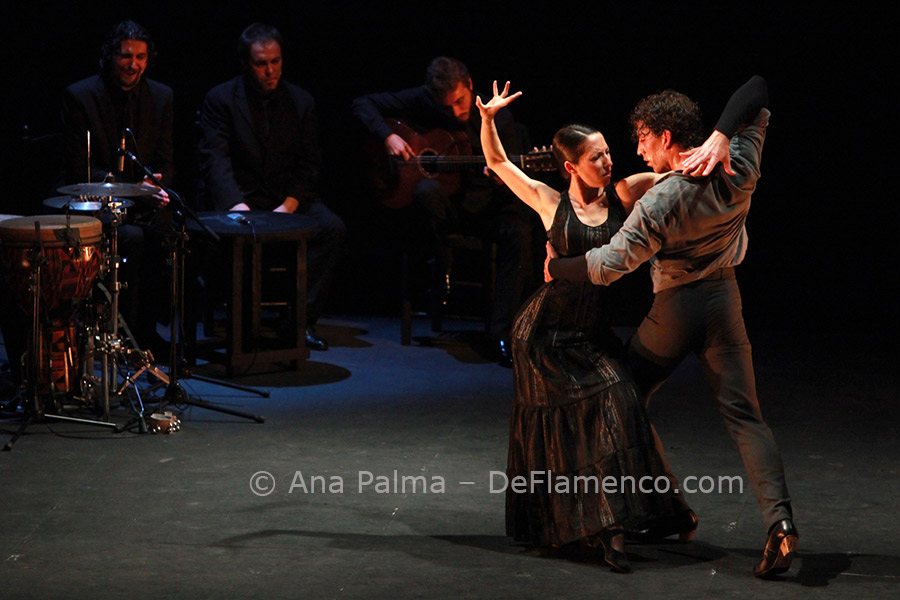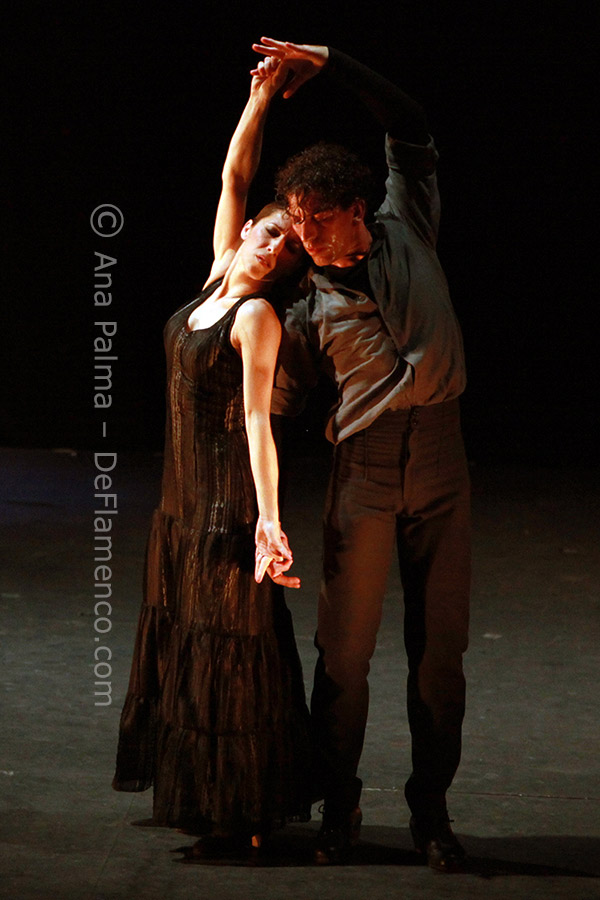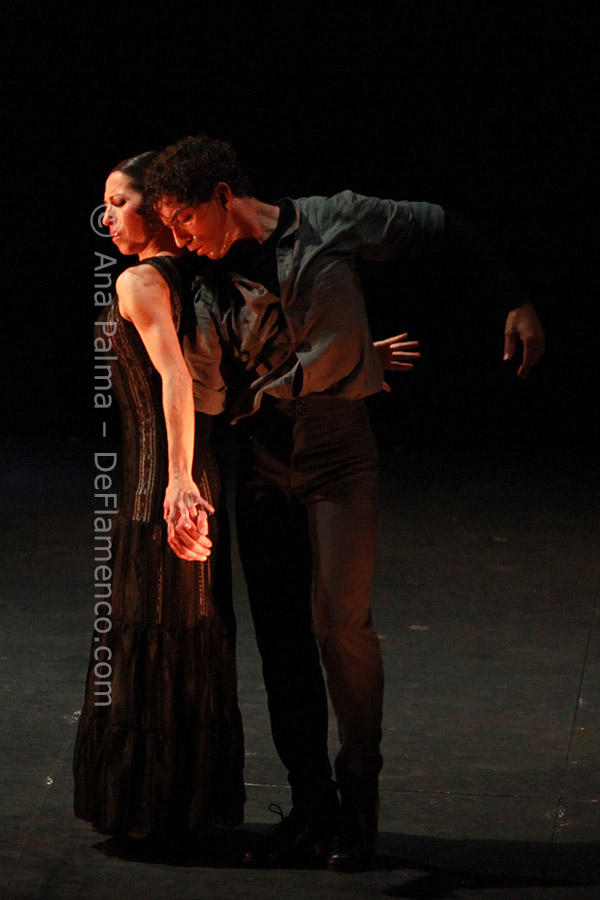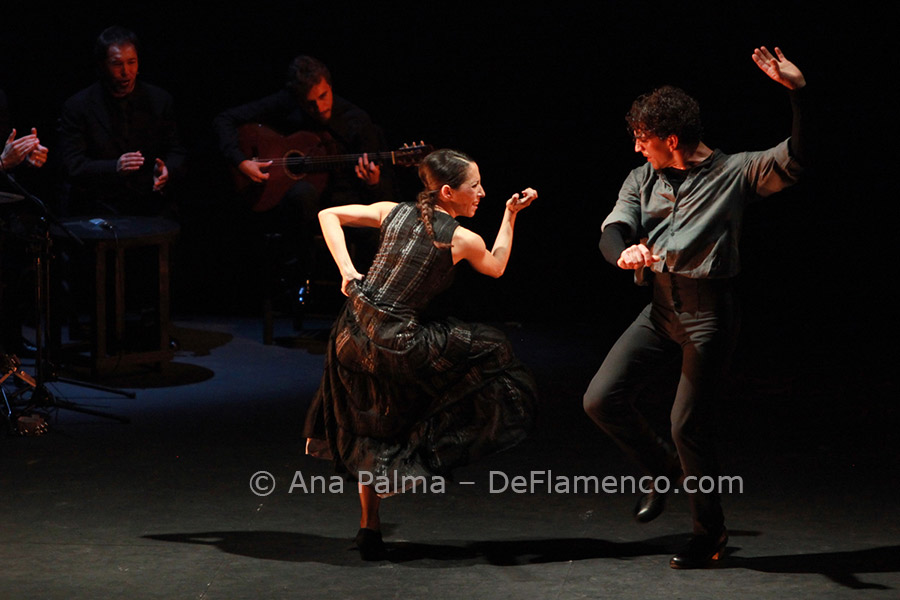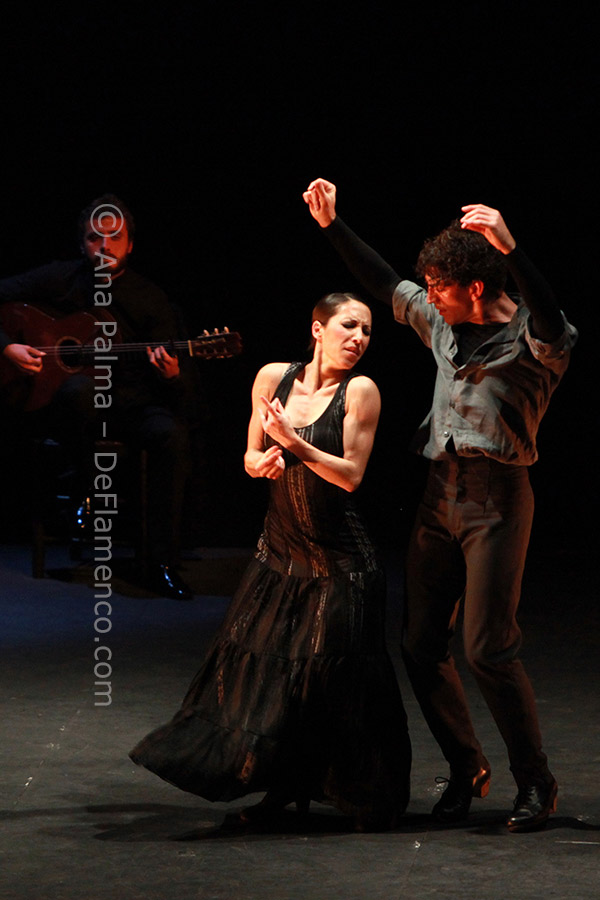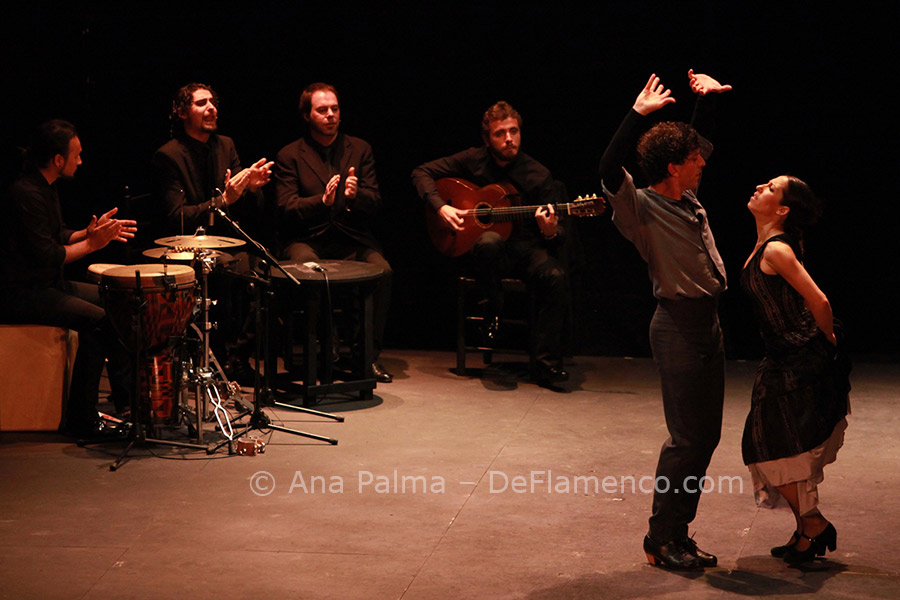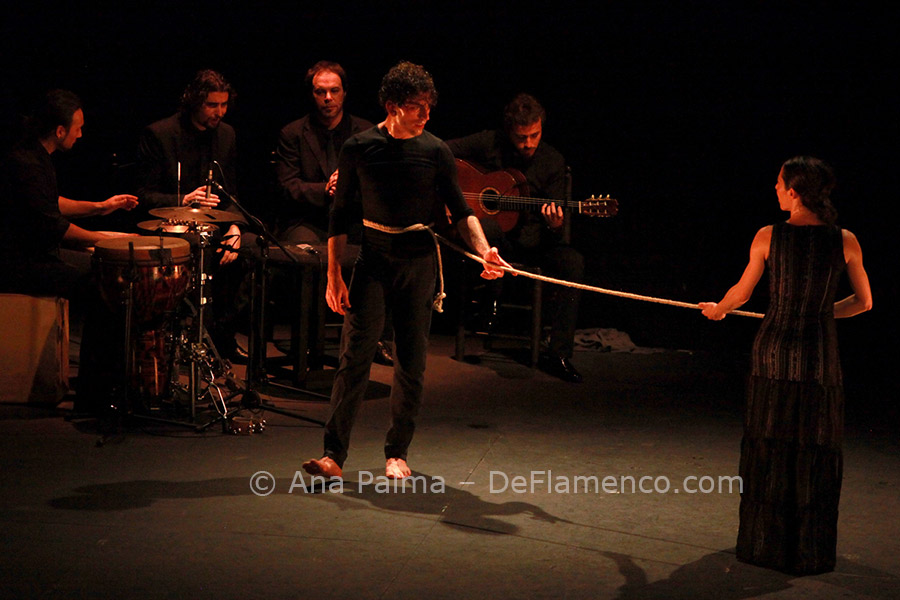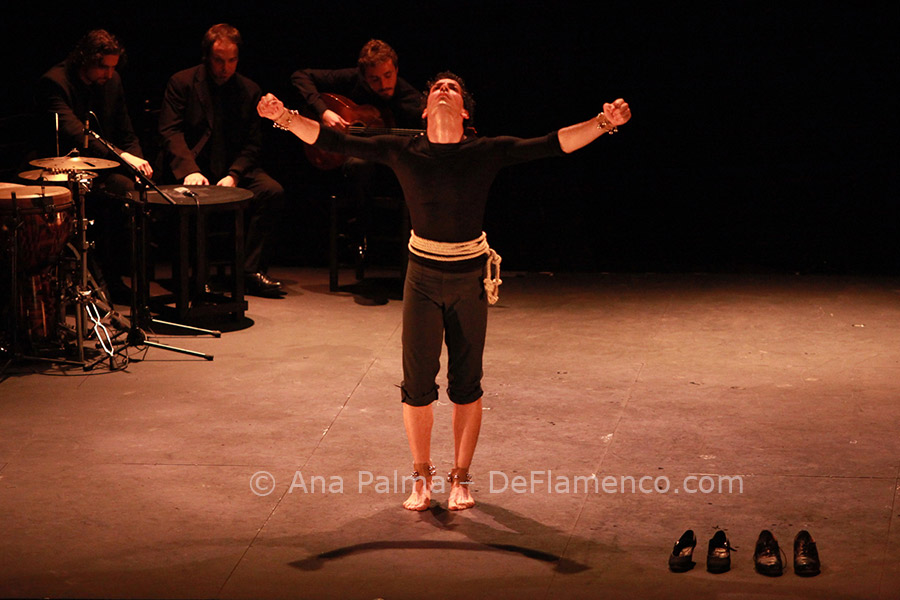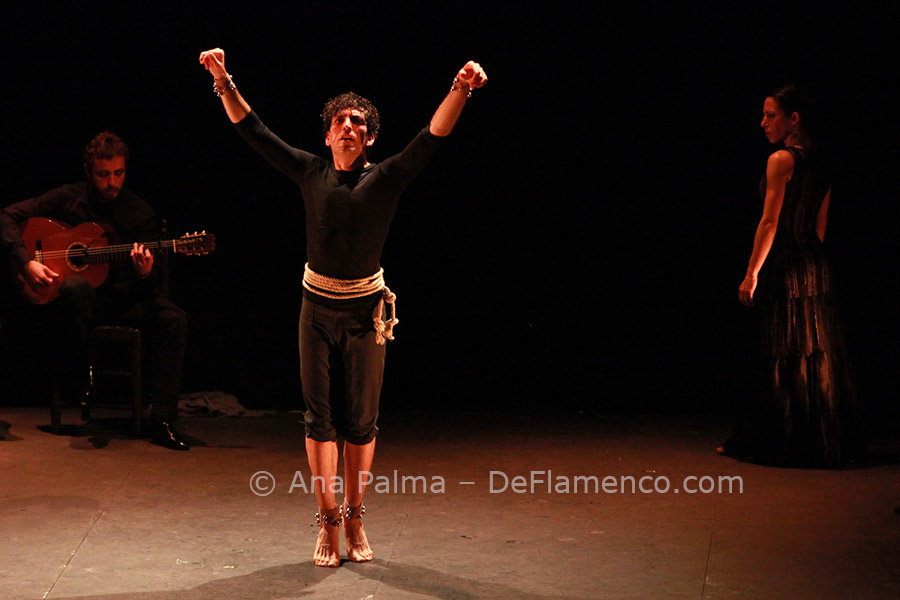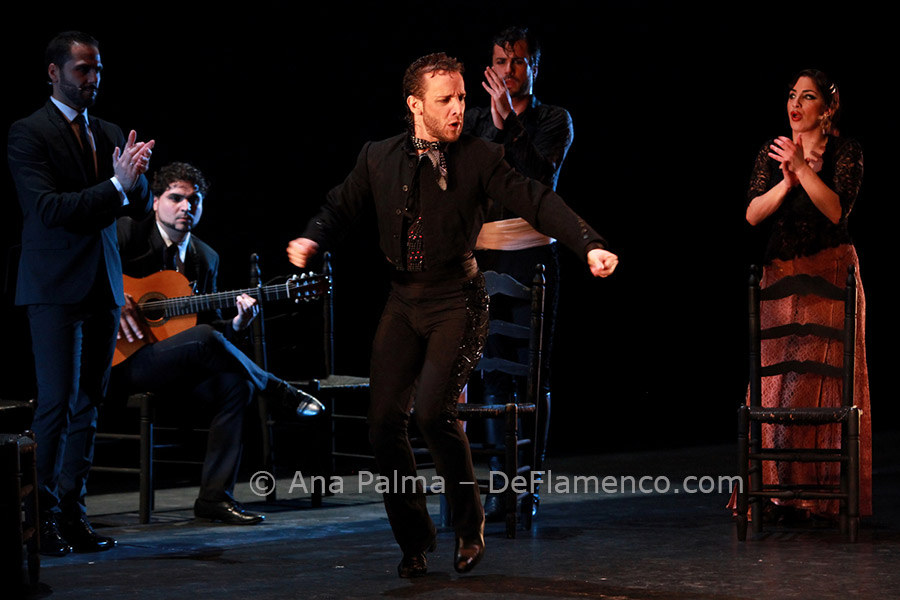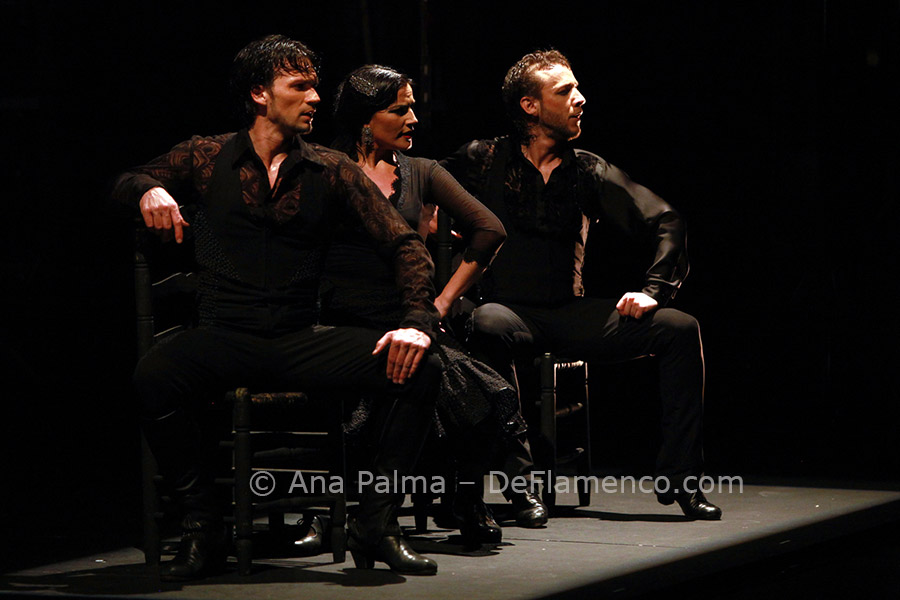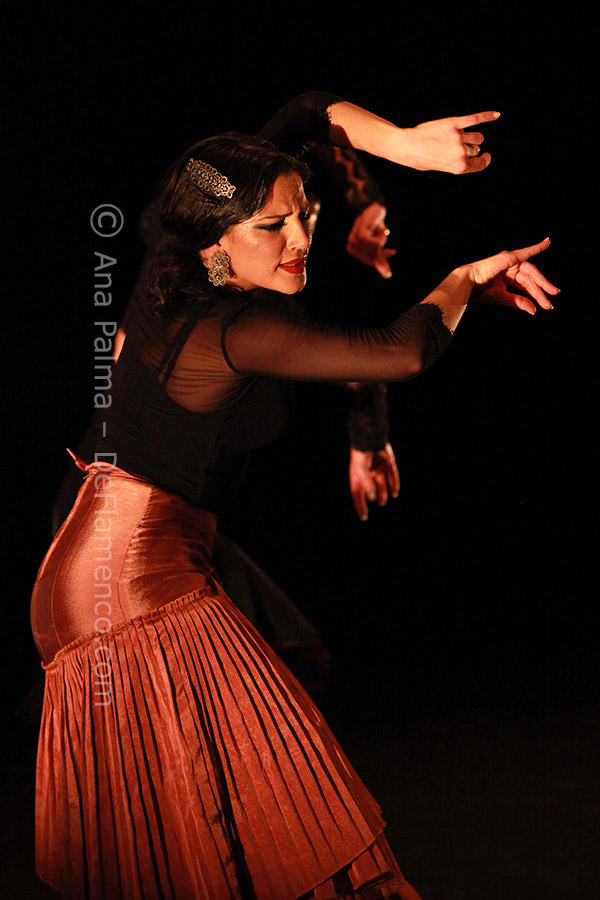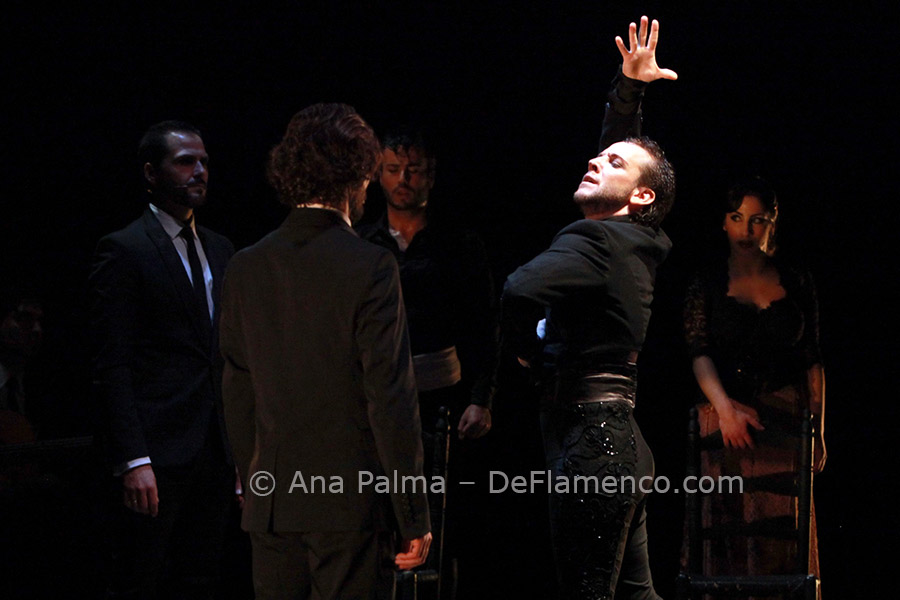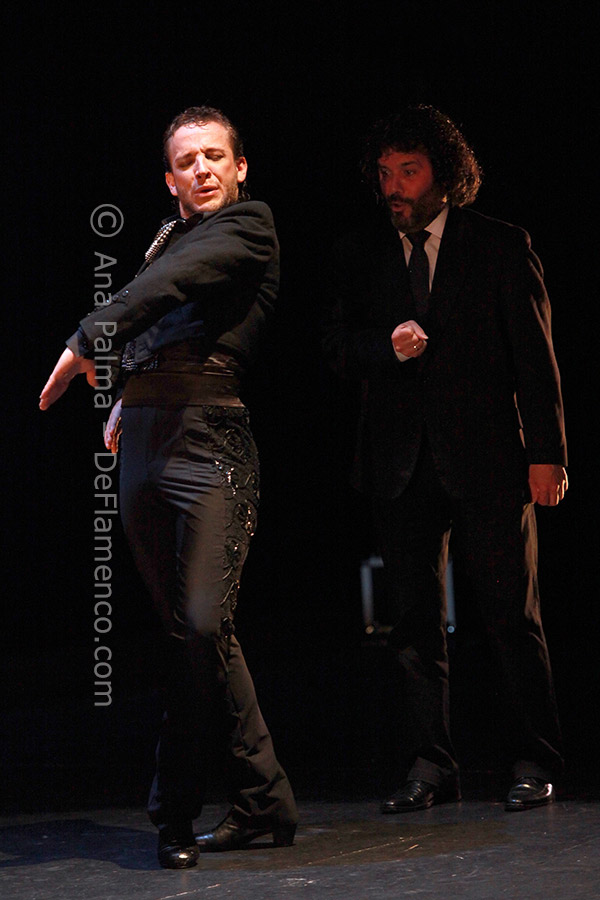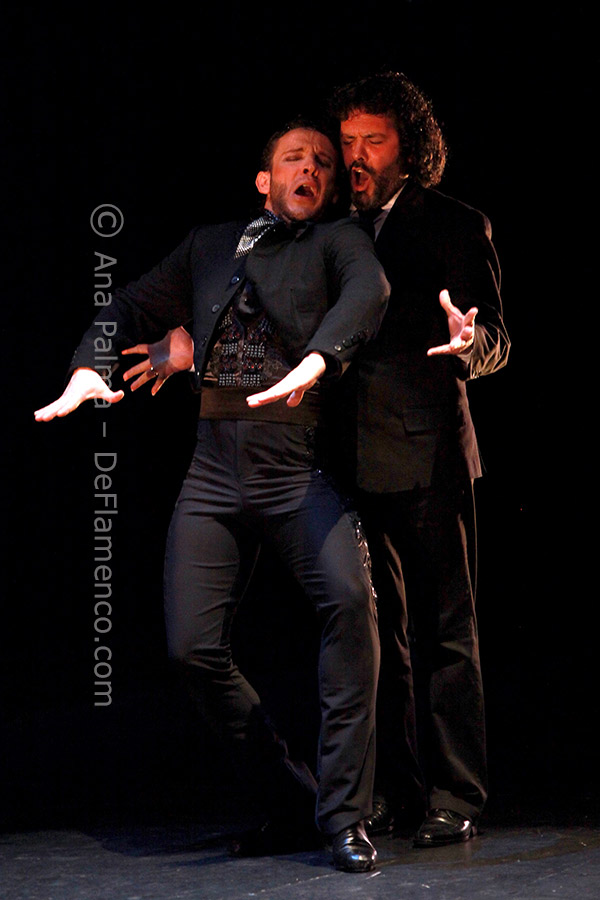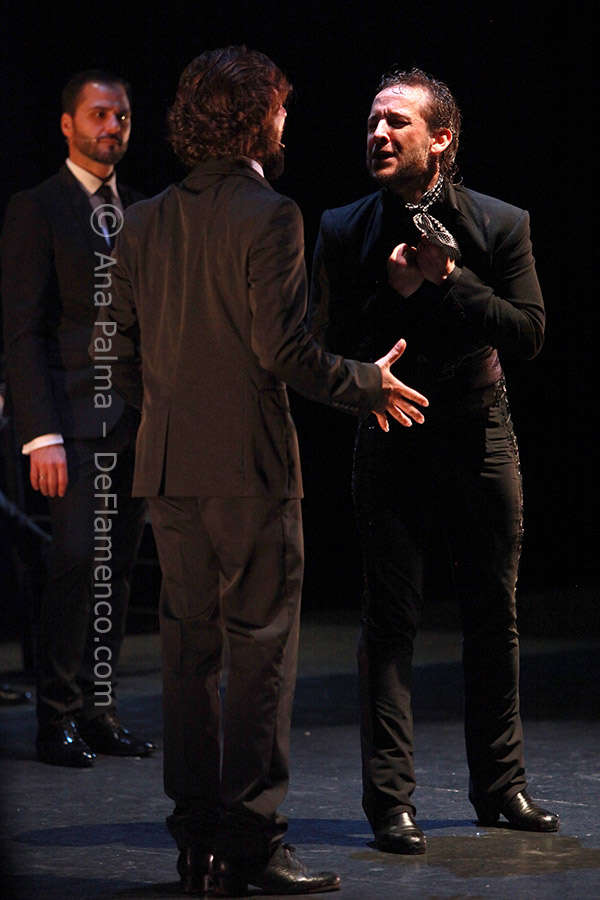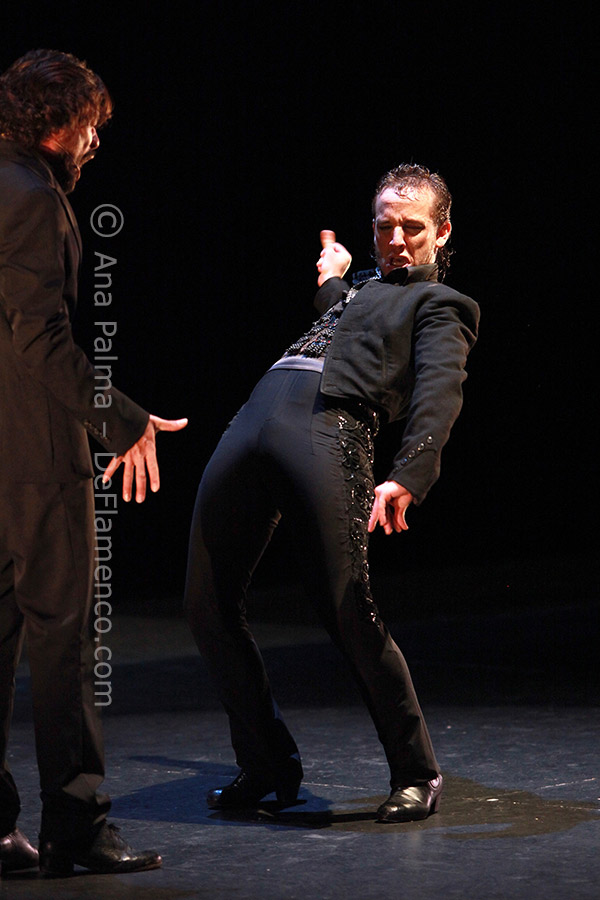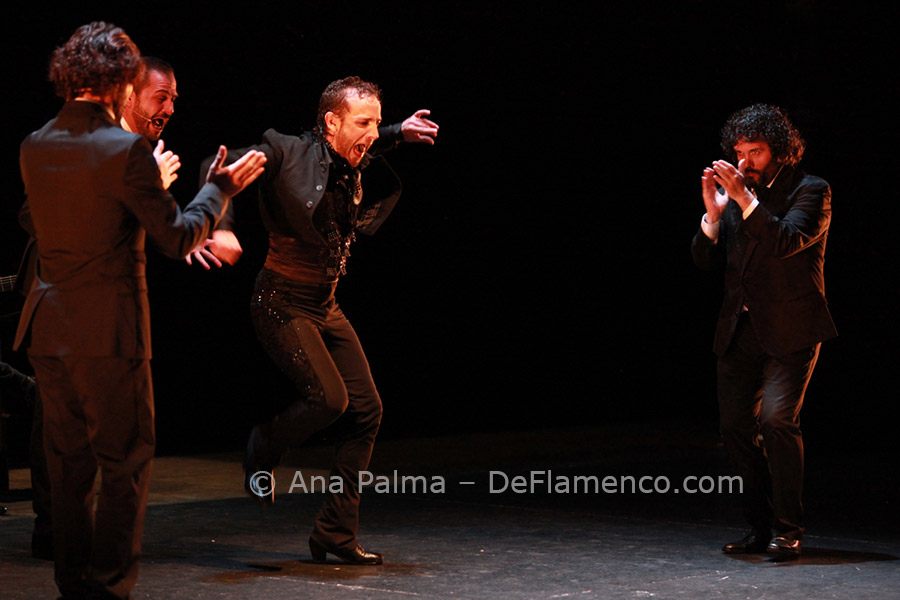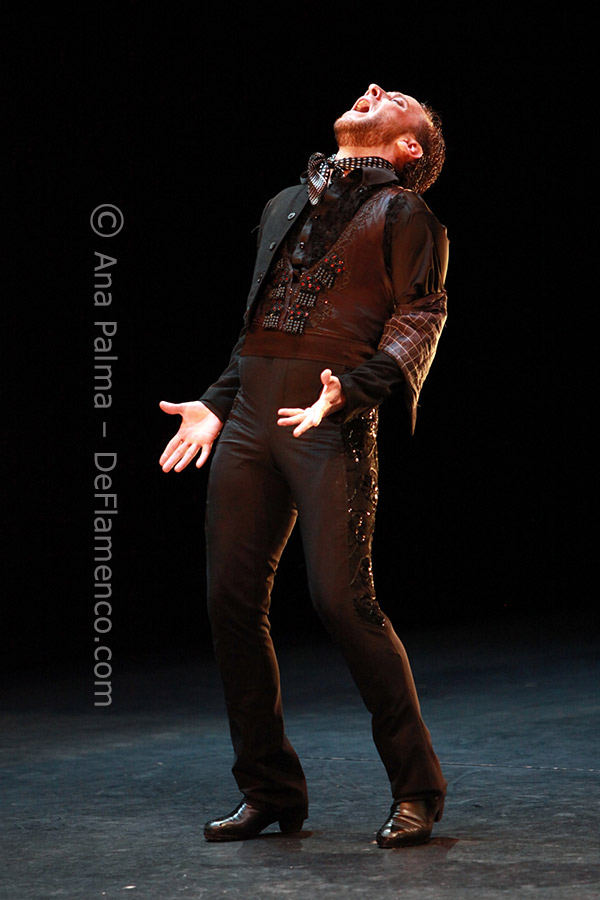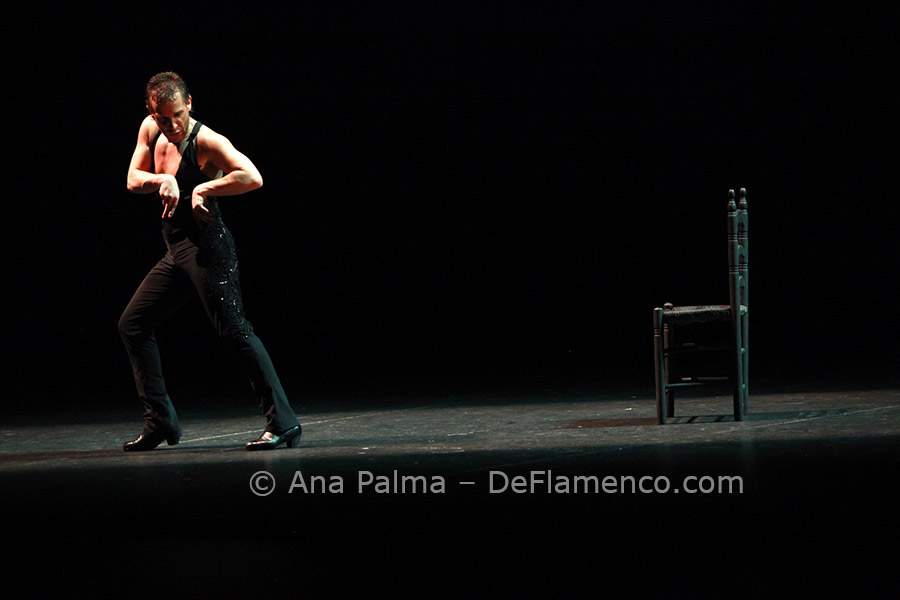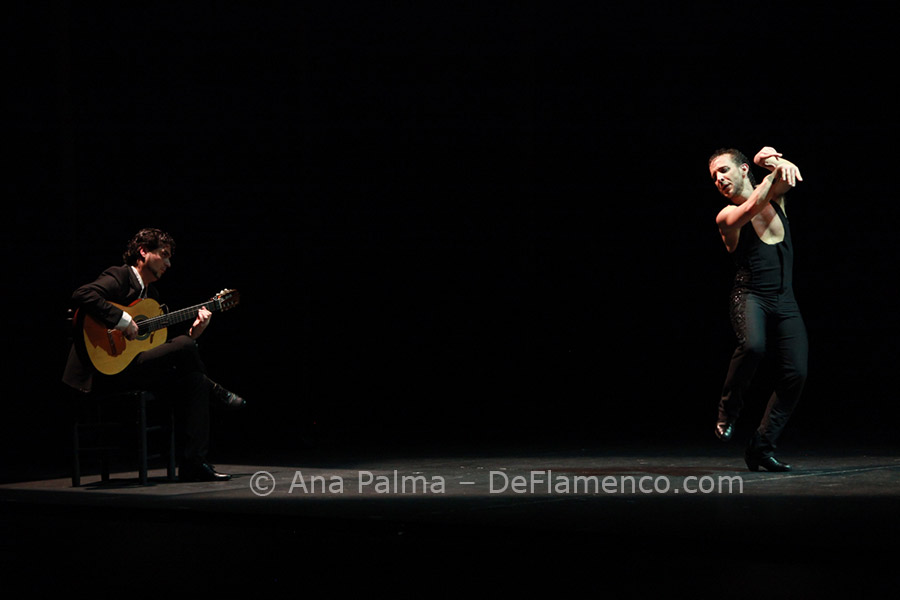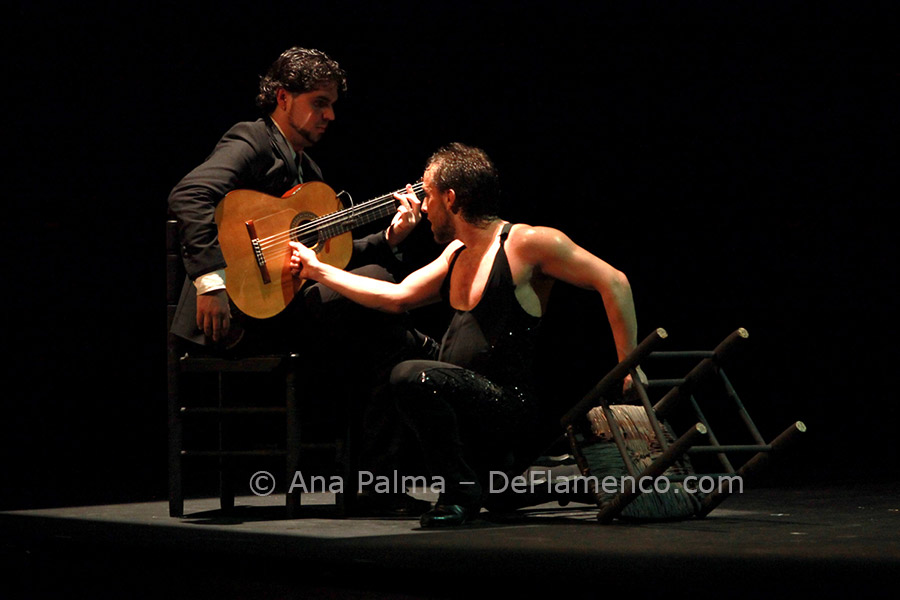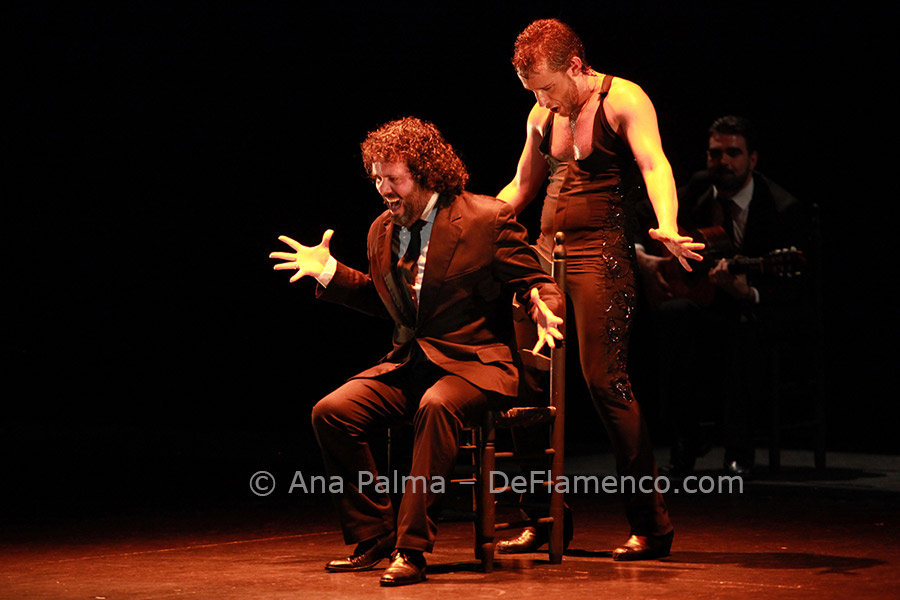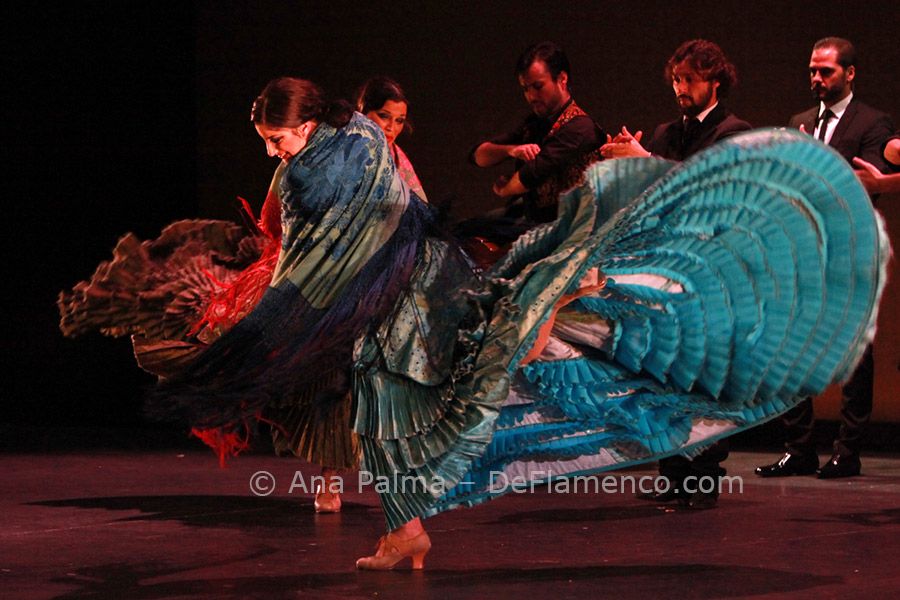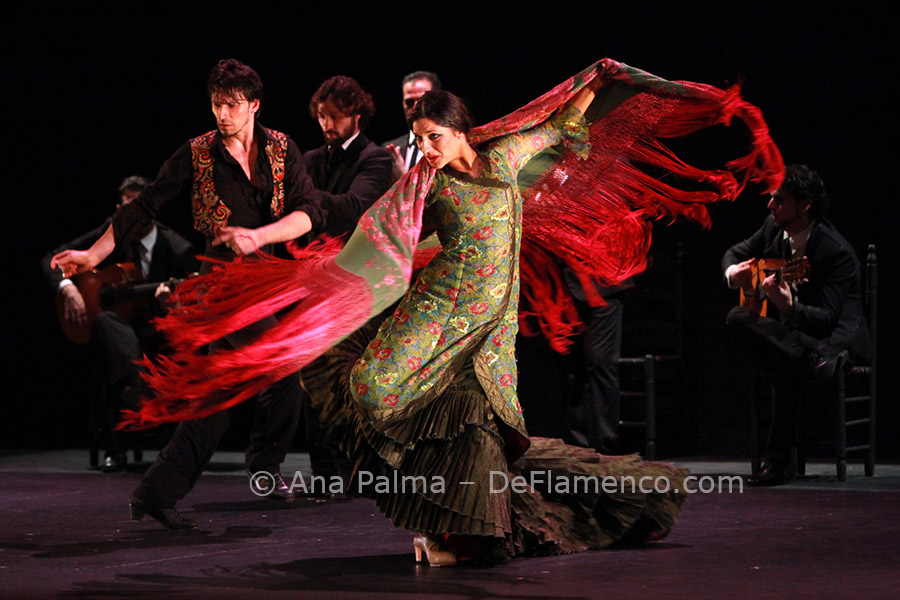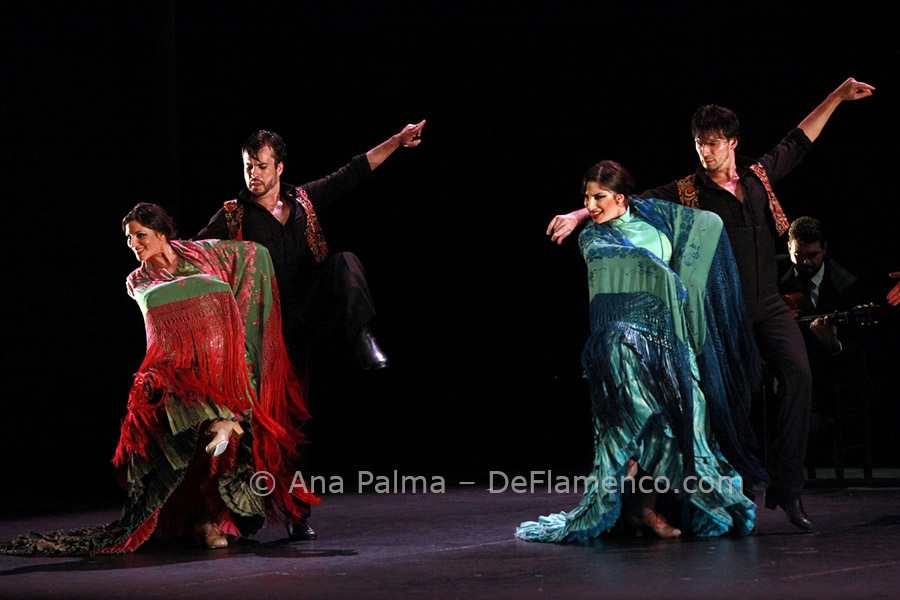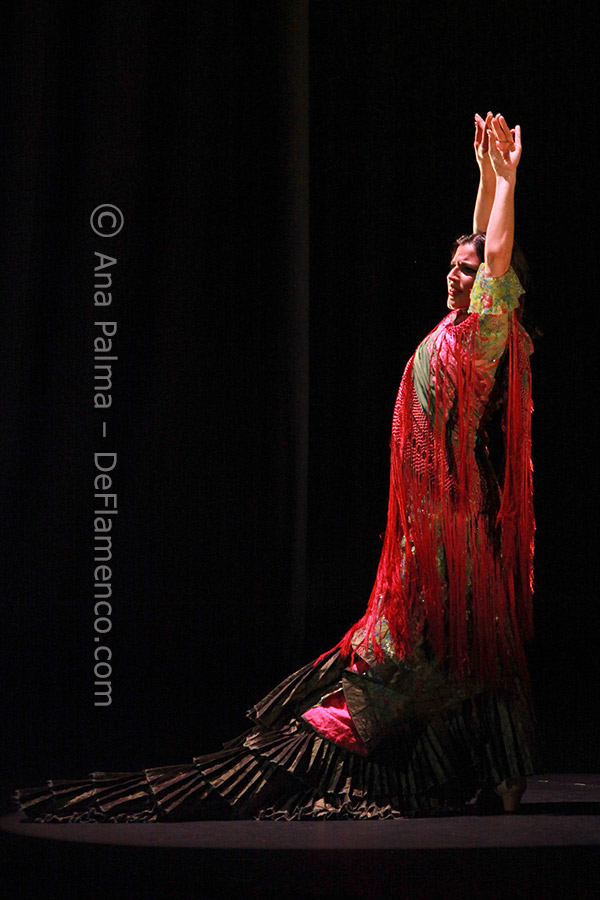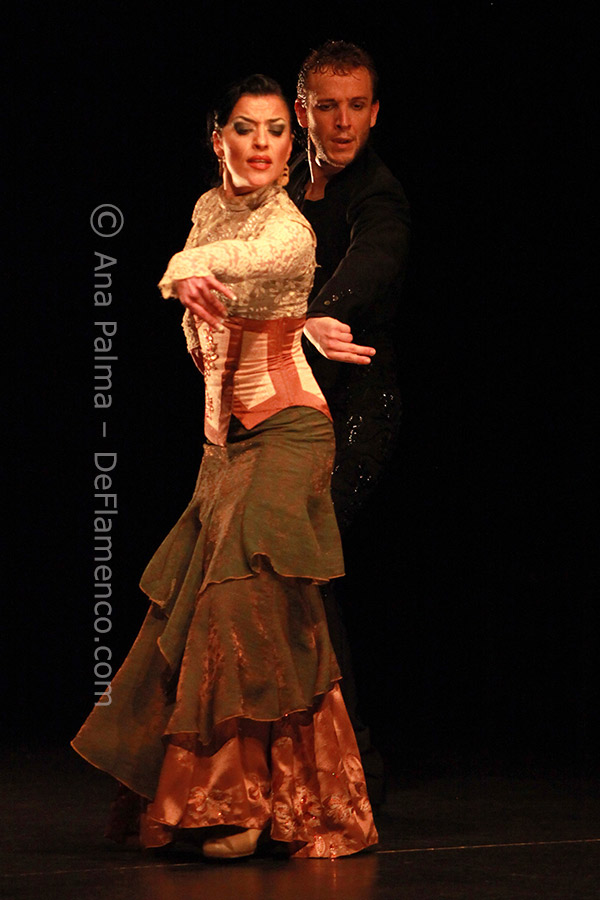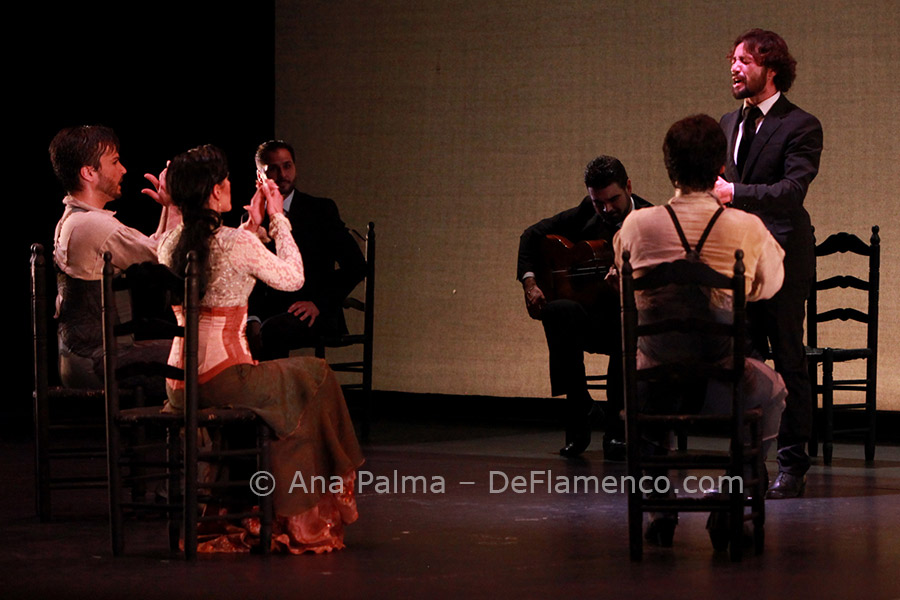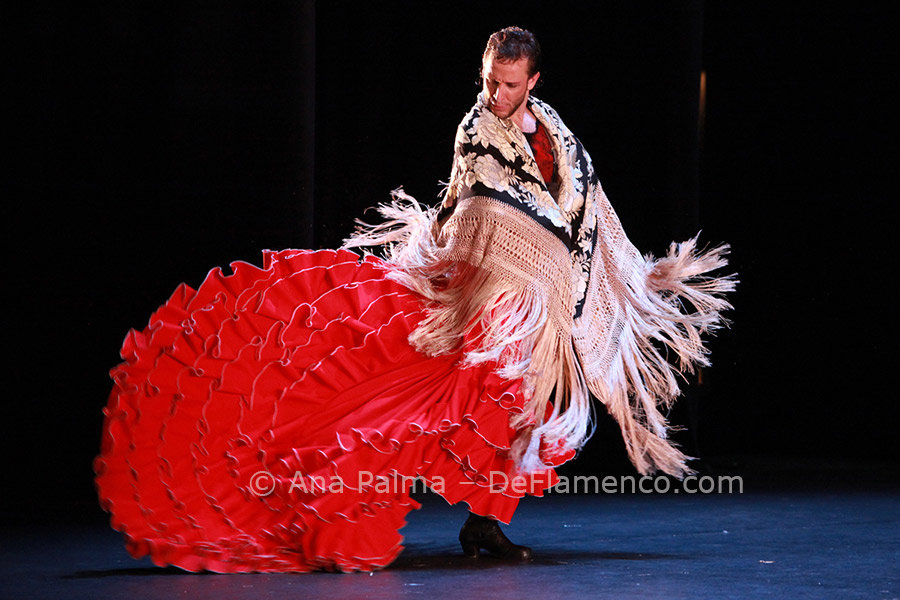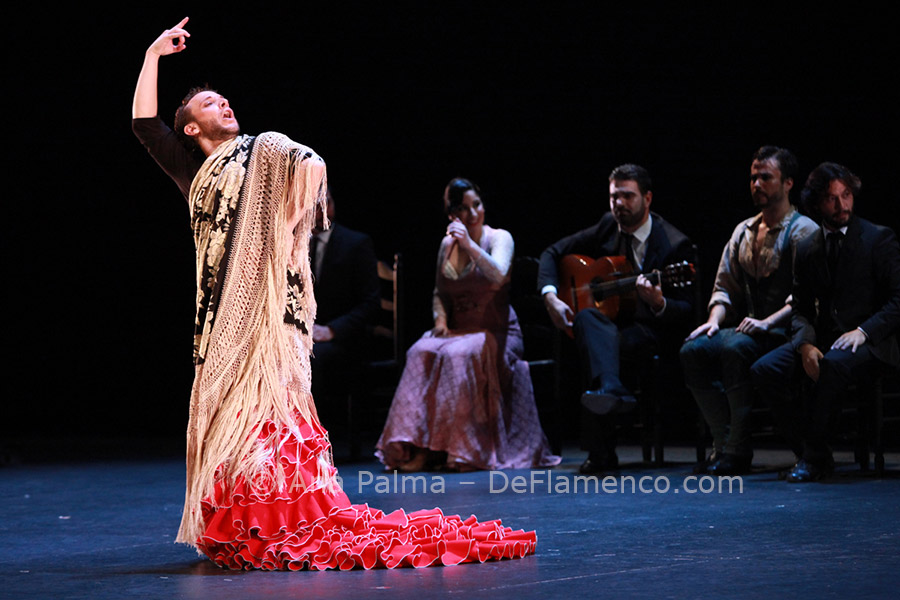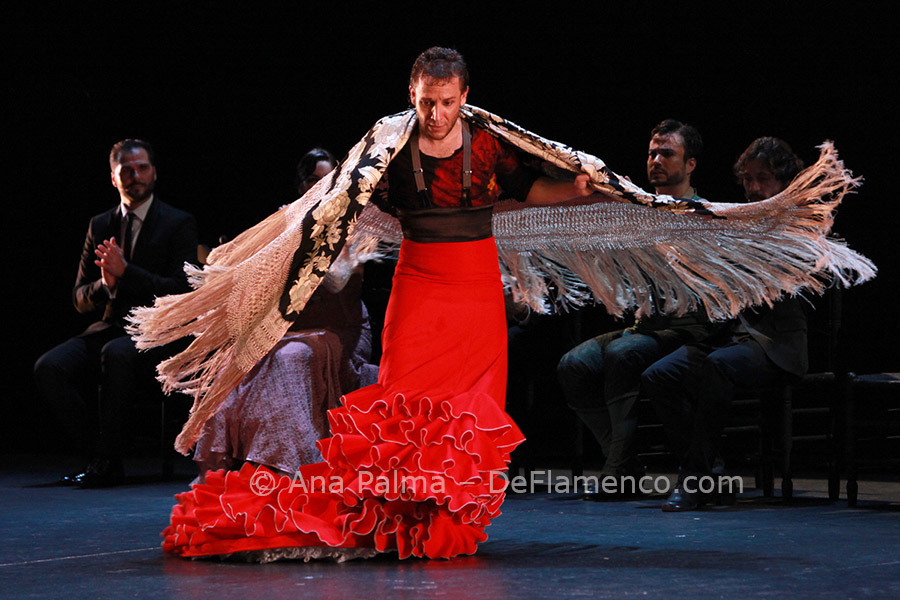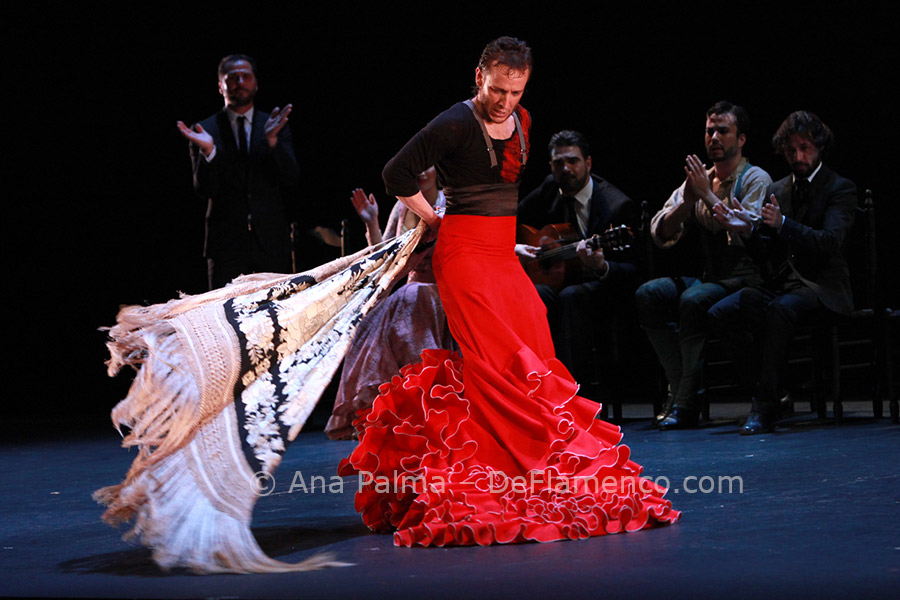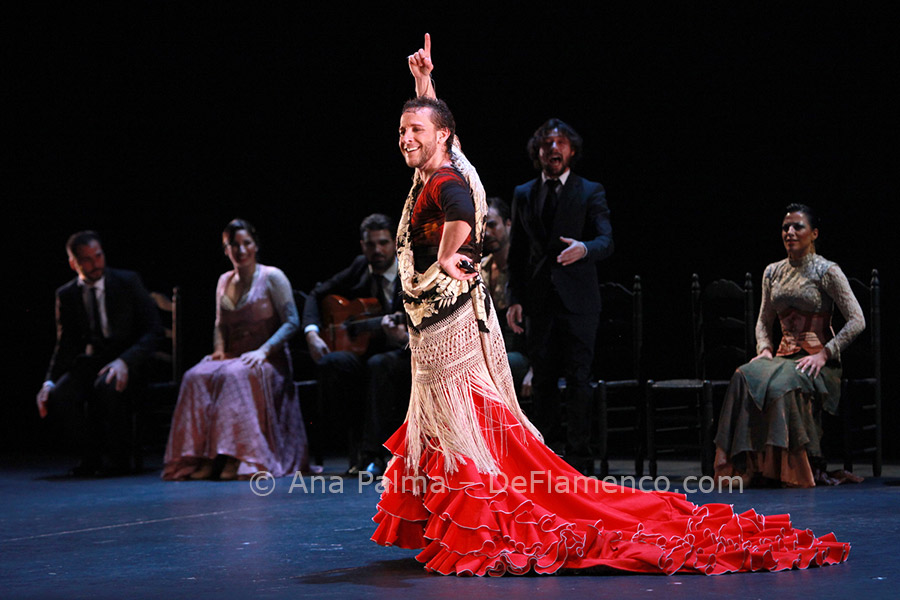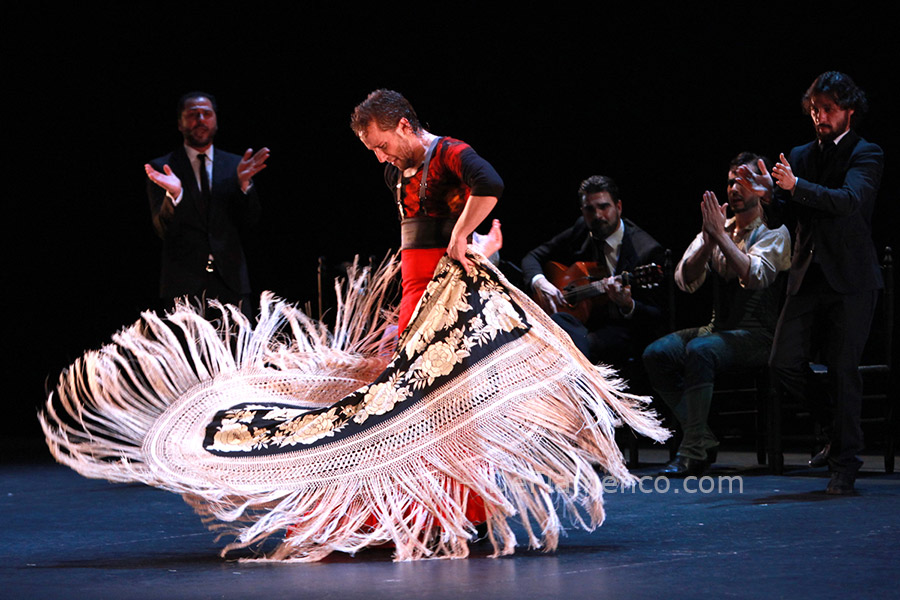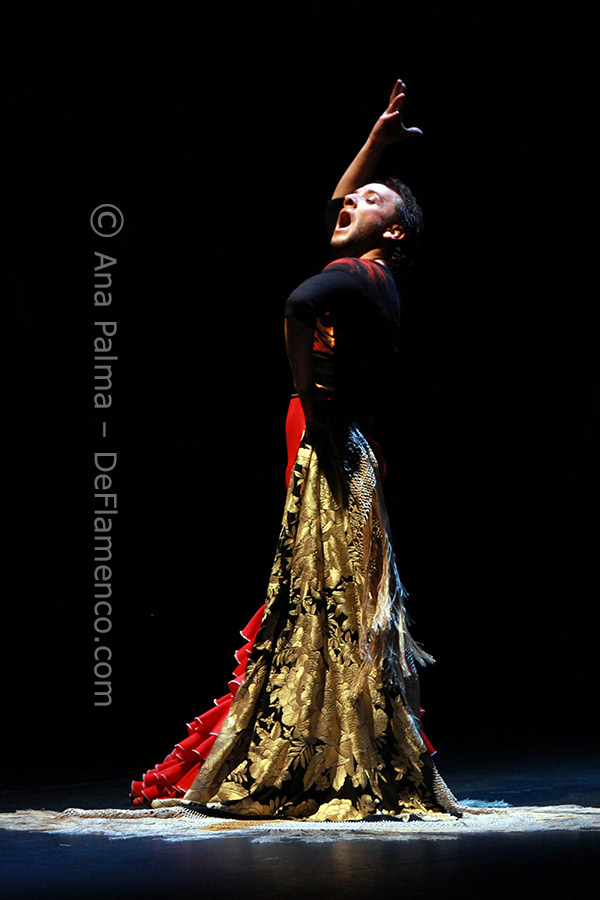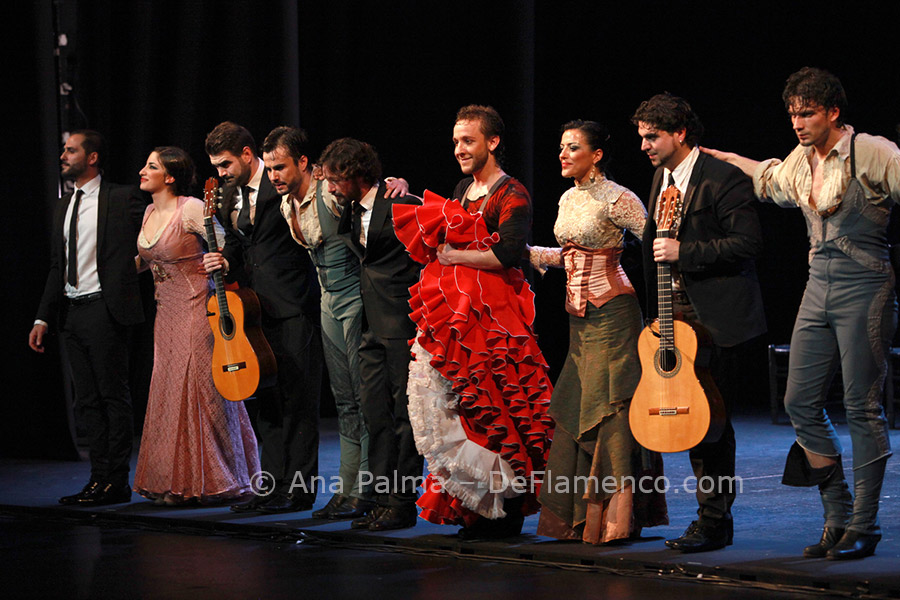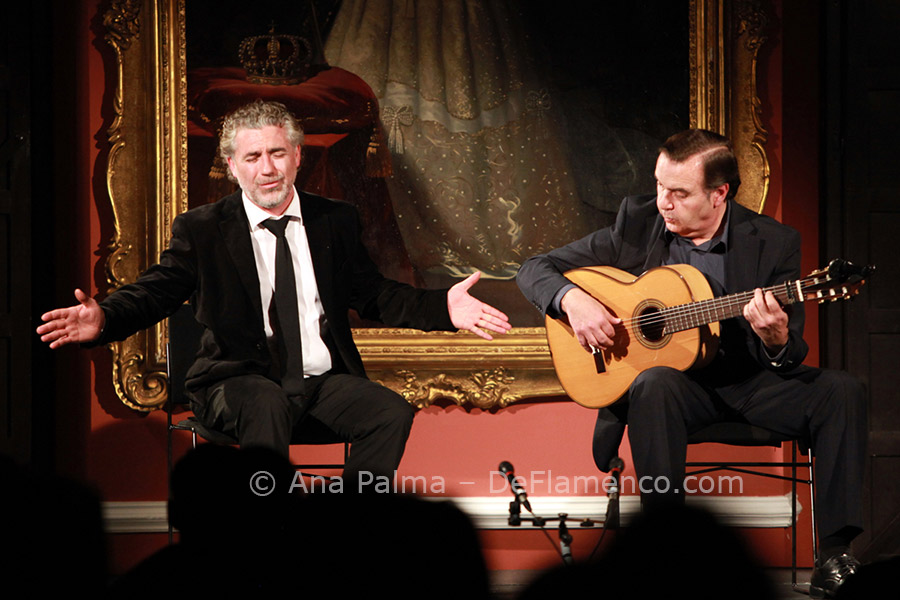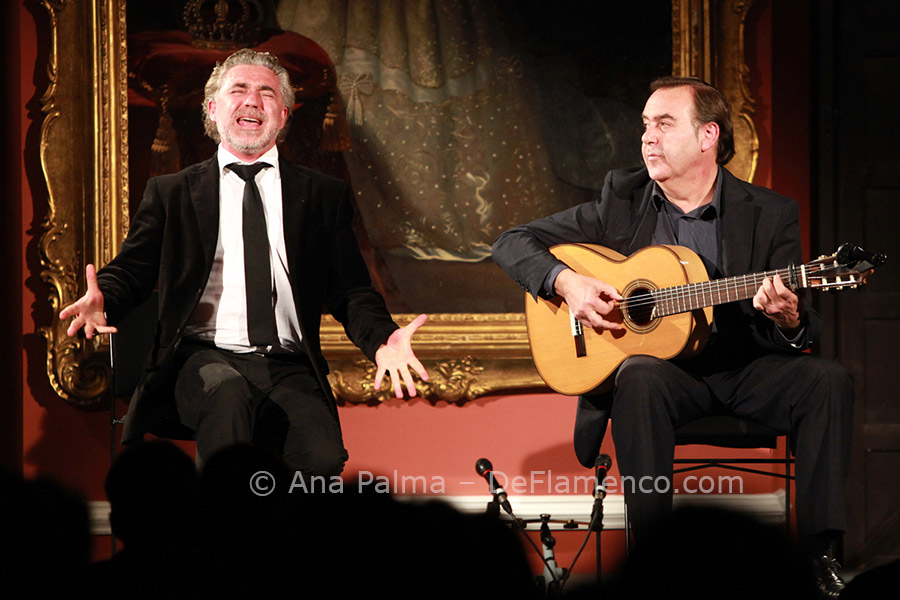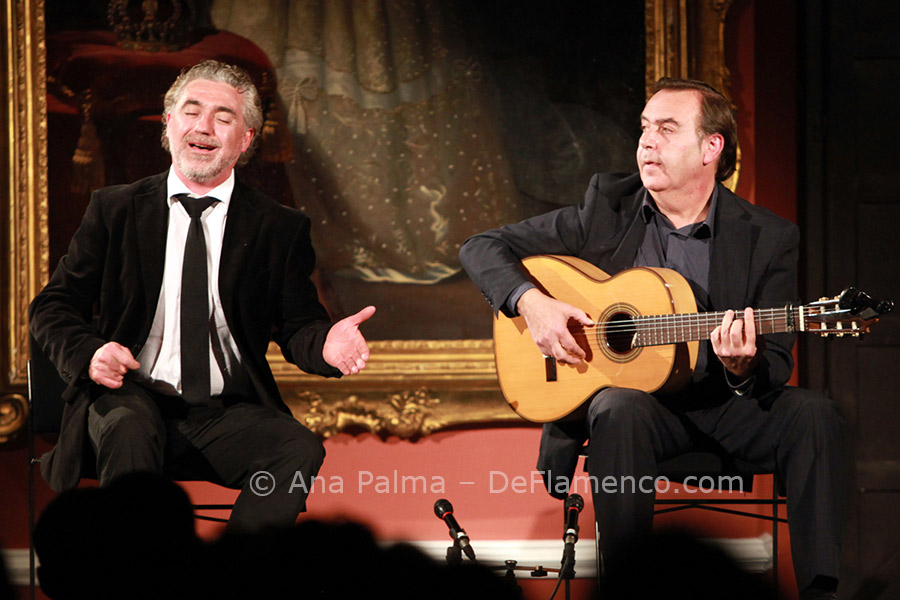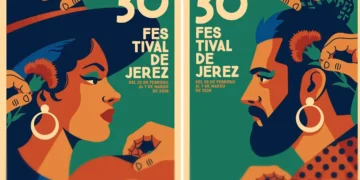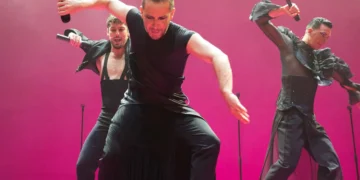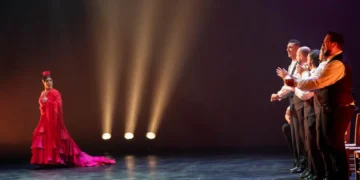Text: Estela Zatania
Photos: Ana Palma
18th FESTIVAL DE JEREZ
Compañía Manuel Liñán «Nómada»
David Coria «Espiral»
Segundo Falcón
Thursday, March 6th, 2014. Jerez de la Frontera
Special 18th Festival de Jerez – All the information
COMPAÑÍA MANUEL LIÑÁN “NÓMADA”
Teatro Villamarta, 9:00pm
Dance: Manuel Liñán, Anabel Moreno, Agueda Saavedra, Inmaculada Aranda, Adrián Santana, Jonatan Miró. Cante: Miguel Ortega, Miguel Lavi, David Carpio. Guitar: Víctor Márquez “El Tomate”, Fran Vinuesa. Director and choreographer: Manuel Liñán.
Thursday at the Festival de Jerez, the title of the show programed at the Villamarta theater, “Nómada”, seemed to suggest that once again flamenco would be sacrificed at the altar of an impenetrable script at the service of a dense libretto.
But Granada dancer Manuel Liñán is too smart and creative to allow that to happen. In fact, he is one of the dancers of his generation – neither young hopeful nor old veteran – who best handles the dilemma of how to update a historic genre without losing its essential character. In the first place, cante. And in second place too, and third as well. Namely, the trio of voices made up of Miguel Ortega, Miguel Lavi and David Carpio, three young maestros, three very different voices for a sort of Greek chorus to make sure things stayed on track throughout the work.
Liñán’s choreography is exemplary, creative, original…he seems to have more ideas than fit in a single work of ninety minutes, and everything tastes like flamenco, no matter how unprecedented. For example, when Miguel Ortega sings his impressive fandango of Toronjo, and Liñán reflects the histrionic gestures of the singer making the song dance and the dancing sing. Or the compás of bulería por soleá which is marked, not with cajón or hand-claps, but with mysteriously oppressive sounds such as heavy sighs that sound like pain or ecstasy. These are small details that add depth and dimension.
Liñán’s dramatic siguiriya with a subtle bullfighter motif and sparks of Granada intensity was interesting. Delightful was the tanguillo-zapateado in which the women dancers do the Lola Flores rap “Las Guapas de Cádiz”, among other things, taking turns from one moment to the next with the singers who interpret classic tanguillos with the music ingeniously modified. There’s a great deal of work behind all this, and of course a brilliant mind.
A complete run-down of rondeña and abandolao, from Ramón Montoya to Frasquito, and never a dull moment….alegrías de Córdoba and quality guitar-playing of Víctor Márquez “El Tomate” and Fran Vinuesa.
And again, the caña. The Festival de Jerez 2014 is going to end up putting this nearly-forgotten form back in circulation along with the soleá de Triana which is also being danced more than ever. I think this is the only variant of soleá a dancer might specifically request, instead of merely asking a singer for “soleá”.
Brilliant choreography for taranto, and the barely audible compás of bulerías in the background behind Lavi’s granaína is just right. The lighting design is admirable throughout, kudos for Olga García (A.A.I.) who is attributed as the person responsible. The black that everyone longs to use, is employed here, not as darkness, but as just another color.
The final number was the now-famous caracoles of Liñán in a bata de cola and with shawl, the first man to dance with a bata in a credible way, because it’s impossible to imagine this dance without it, nor would there be the same effect if this were a woman dancer. Everything is possible in the world of Manuel Liñán who gives us traditional flamenco seen through new eyes.
DAVID CORIA “ESPIRAL”
Sala la Compañía, 12 midnight
The new generation seems to be recuperating male flamenco dance after many years of female domination. Now it’s young David Coria who last night gave an interesting recital at the Sala la Compañía.
This young dancer has magnificent preparation…like so many others nowadays when the level is very high. But he is especially imaginative and creative, although it didn’t hurt to have the collaboration of Rafael Estévez and Valeriano Paños who are attributed with the “original idea”, “repertoire” and other assorted behind-the-scenes tasks.
The work “Espiral” is painlessly conceptual. Except for a few ill-advised segments, there’s good solid flamenco. A subtle sub-text of the conflict between traditional and avant-garde is resolved by combining the two. Noteworthy tangos include those of Piyayo, Triana and even garrotín, which is just another kind of tangos. We hear a fragmented off-stage voice…”el Pelao”, “el Fati”, “Pagés del Corro”, and David dances farruca to the sound of a hammer and anvil.
Energy seeps out in some extended down-time. A conventional soleá of Ana Morales has a light moment when David arrives and gestures as if forbidding her to do “that” kind of dancing. A soleá of Carapiera makes the transition to cantiñas, and there is also sevillanas, and why not? A strange final dance with David barefoot, wearing little bells on his wrists and ankles, is accompanied by some of the more unusual styles of fandangos de Huelva sung by David Sánchez “El Galli” and Matías López “El Mati”. The interesting Jesús Guerrero provided the guitar accompaniment, and Jorge Pérez the percussion.
SEGUNDO FALCÓN
Palacio Villavicencio, 7:00pm
The most tranquil moment of Thursday at the Festival de Jerez, was at the Palacio Villavicencio with singer Segundo Falcón accompanied by Manolo Franco on guitar. A real treat to have such fine artists, people from the “in-between” generation that came after Camarón, but without reaching today’s contemporary style. Two flamenco gentlemen, elegant in their dress and manners, meticulous singing and guitar, full of dignity. Segundo Falcón had some lovely words for Paco de Lucía, in addition to mentioning other recent losses in flamenco such as those of Juan El Torta, Félix Grande, María Bala and el Eléctrico.
There was also an assortment of cantiñas, stylized malagueñas with abandolao, soleá of Triana, sweet as a caress, mining cante with tangos of Extremadura, caña and policaña with original twists and fandangos to end, with Segundo offering explanations and historical references between cantes.
David Coria – Festival de Jerez
Manuel Liñán Nomada
Descubre más desde Revista DeFlamenco.com
Suscríbete y recibe las últimas entradas en tu correo electrónico.


